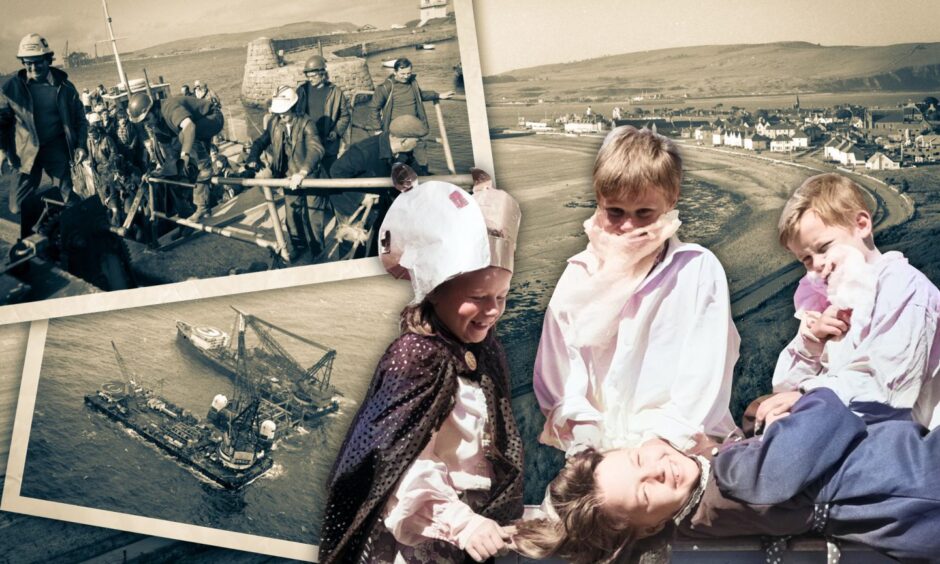
The Black Isle town of Cromarty has had many ups and downs in its fortunes since it became a Royal Burgh in the 13th century, then lost the status 300 years later.
The sea had always sustained the town, and Cromarty’s outstanding natural harbour made it a major trading port in the 18th and 19th centuries.
At the town’s peak in the bustling 1830s, its population amounted to 2215 souls.
That wouldn’t last after the sharp decline of its herring industry in the 1840s, compounded by the town being by-passed by the railways.
By 1881 the official census stood at 1352 souls in Cromarty, and over the next 80 years, the town lost more than half its inhabitants, down to 605, and still falling.
But almost half a century ago, things were on the rise again.
Across the Cromarty Firth came a beacon of hope in the shape of the Nigg HiFab construction yard.
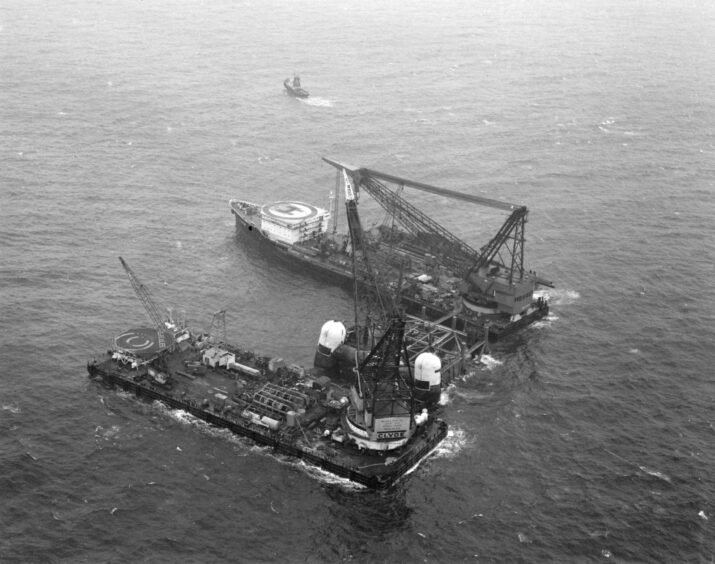
The yard serviced the burgeoning North Sea oil industry. Above, the 23,000-ton steel jacket Highland One, built in Nigg, is secured to the seabed on the Forties Field by the giant crane barges Hercules and Thor in 1974.
The jacket was for the BP platform Forties Charlie and was placed in 416ft of water. The jacket – the lower section of the platform which is fixed to the seabed – had been towed 200 miles from Nigg HiFab and driven to a depth of 260ft by pile hammers.
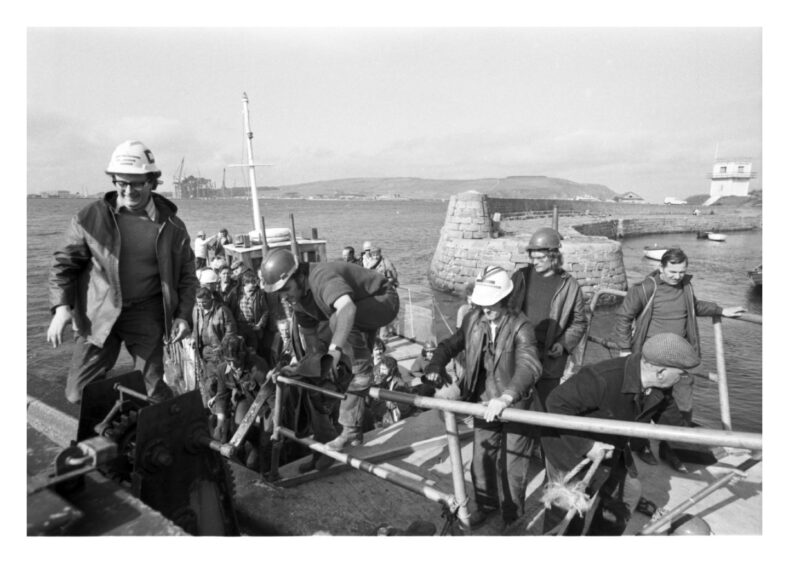
A new life for Cromarty, enthused the P&J.
“Some idea of the infusion of vigour and of opulence that has come to the old town, so long decaying from its former grandeur, can be gathered from these pictures which show how the harbour wakens up to activity when the workers on the Nigg platform site come off duty at the end of their shifts, and ‘invade’ the Black Isle by the ferry laid on for them by Highland Fabricators.
” ‘When this first happened the people’s spirits rose!’ said the Provost of Cromarty, Mr D. G. Ross.

“‘At present a new scheme of 81 council houses is in course of erection. Cromarty is a mecca for conservationists, but it cannot live on its period charm alone.'”
A fierce debate was raging at the time over the need to conserve the 18th century beauty of the town, or allow restoration and development, but housing had to be found for the influx of workers.
Also on the go at the time was a private housing scheme of 15 houses and a planning application for a large scheme of holiday chalets at Bayview to the west of the town.
In Little Vennel, pictured below, one of the streets of Cromarty’s bustling Fishertown, restoration had taken place and was considered ‘most attractive’.
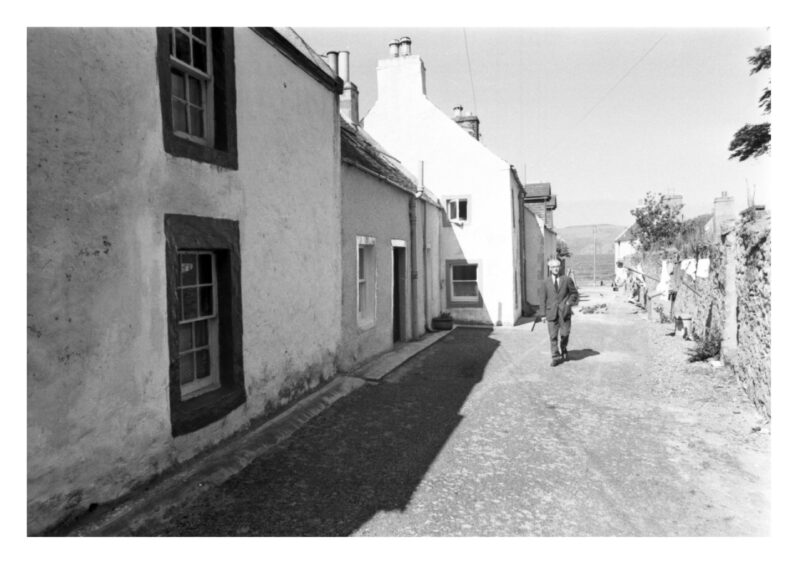
The exterior of the 1782 former Sheriff Court House (below) underwent a £6000 restoration, but there were lamentations that its interior didn’t have a proper modern purpose.
The building would eventually be restored with the support of Ross and Cromarty District Council and re-opened as the Cromarty Courthouse Museum in 1991.

Meanwhile Cromarty School was thriving.
Rehearsals were underway for Primary I and II’s production of Snow White and the Seven Dwarfs.
Grouped round Snow White (Shona Clarper) are Rosemary Chalmers as the Wicked Queen and Martin Hill and George Chalmers as dwarfs.
It seems unusual now that the children were in school in July, and rehearsing what would normally be a Christmas show. Do any readers have an explanation? Let us know in the comments below.

Snow White rehearsals continue in the sunshine of July 1974.
Meanwhile, pupils undertook a wide range of activities in their beautiful, vaulted school hall.
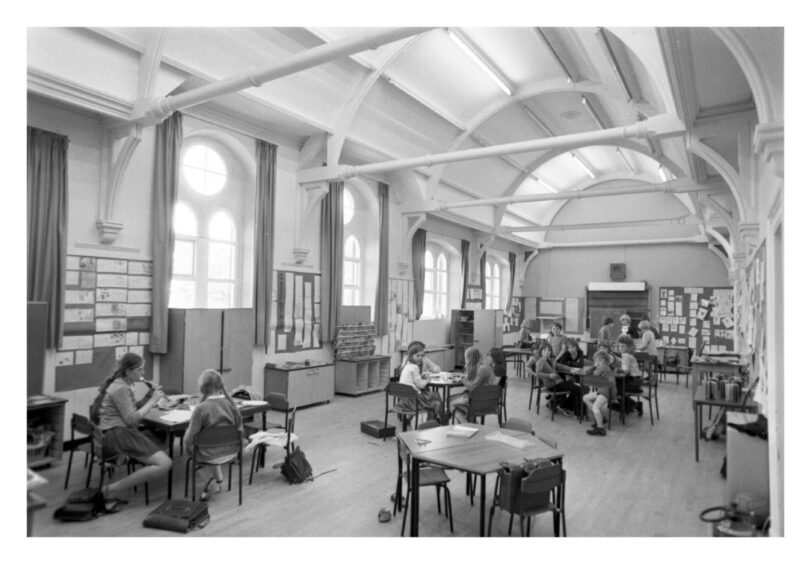
The school is grade B Listed, and in a conservation area.
They were heady days for Cromarty School Orchestra too, seen below with the first steel jacket fabricated in Nigg in the background across the Firth.
What a lot of recorders. Were you there?
Back row: Neil MacPherson, Willie Nicholson, David Shepherd
Middle: Lillian Logan, Hazel MacLean, Kathleen Shepherd, Stephanie ?, Angela Taylor, Sandra Bain, Janet Feasey, Margaret MacLeod, Shirley McBean.
Front: Ian Clasper, Helen Cameron, Sandra MacDonald, Lorna Matheson, Robert Cameron.
Visit from Queen Elizabeth
Things were so positive in the area, that a Royal visit was arranged.

The late Queen is seen above inspecting Highland No 1 oil platform.
She also popped in to see the yard’s medical staff.
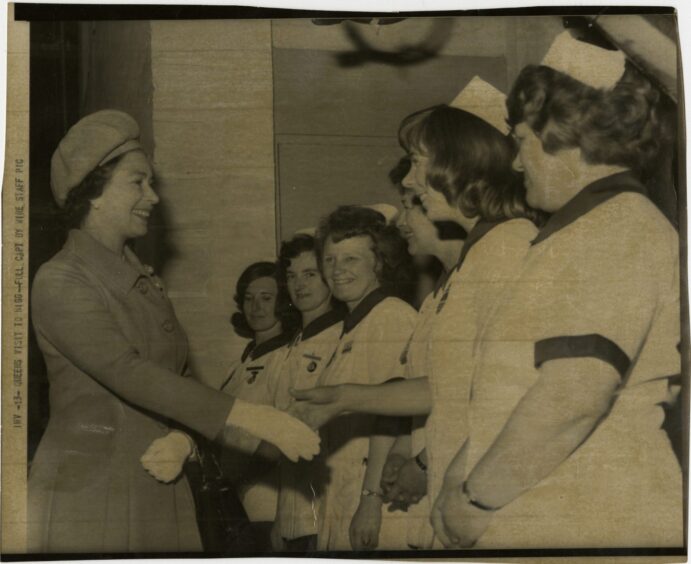
Among the women presented to the Queen were (left) – Sister Shirley Murray, Alness; and Nurses Marion Mackay, Tain; Betty Marshall, Nigg; Jessie Skinner, Inver; Nancy Drever, Tain, and Donella Ross, Inver.
There has been another cycle of decline in the area since this optimistic snapshot of half a century ago.
But now with the Inverness & Cromarty Firth Green Freeport status granted to the area, observers to come may well have plenty of things to say about the Cromarty of the future.
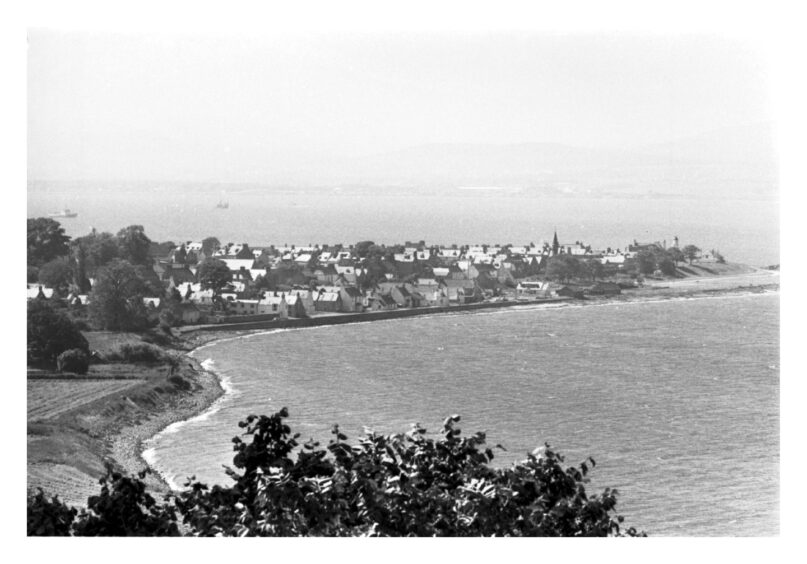

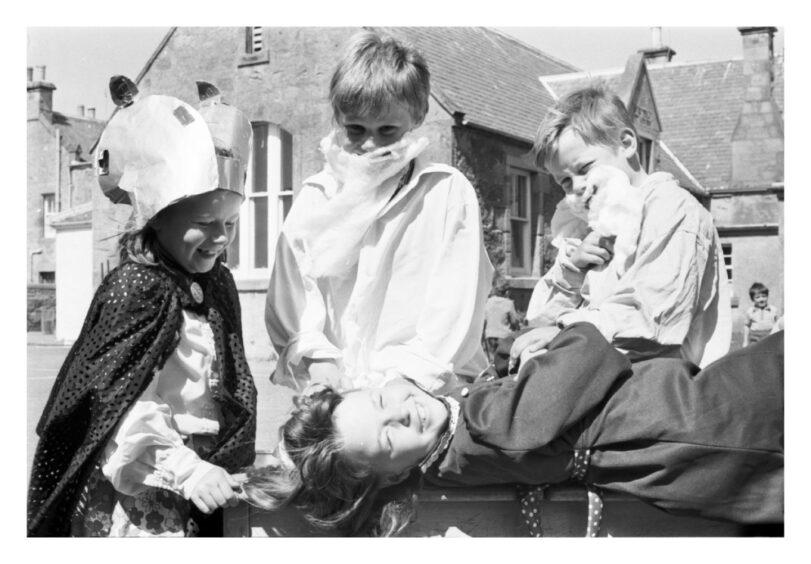
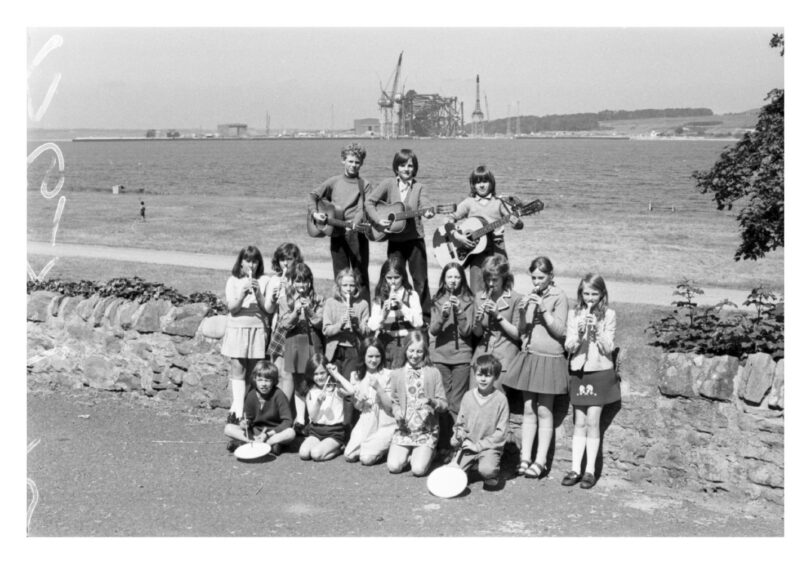










Conversation